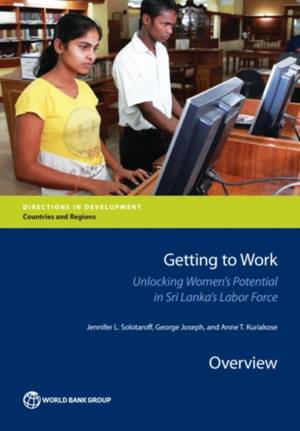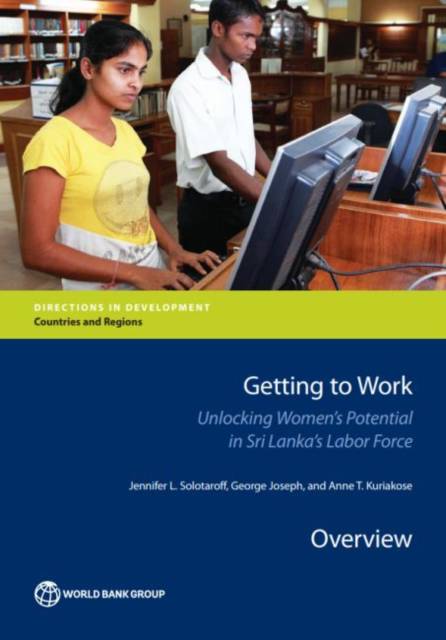
Je cadeautjes zeker op tijd in huis hebben voor de feestdagen? Kom langs in onze winkels en vind het perfecte geschenk!
- Afhalen na 1 uur in een winkel met voorraad
- Gratis thuislevering in België vanaf € 30
- Ruim aanbod met 7 miljoen producten
Je cadeautjes zeker op tijd in huis hebben voor de feestdagen? Kom langs in onze winkels en vind het perfecte geschenk!
- Afhalen na 1 uur in een winkel met voorraad
- Gratis thuislevering in België vanaf € 30
- Ruim aanbod met 7 miljoen producten
Zoeken
Getting to Work
Unlocking Women's Potential in Sri Lanka's Labor Force
Jennifer L Solotaroff, George Joseph, Anne T Kuriakose, Jayati Sethi
€ 56,45
+ 112 punten
Omschrijving
Sri Lanka has shown remarkable persistence in low female labor force participation rates--at 36 percent from 2015 to 2017, compared with 75 percent for same-aged men--despite overall economic growth and poverty reduction over the past decade. The trend stands in contrast to the country's achievements in human capital development that favor women, such as high levels of female education and low total fertility rates, as well as its status as an upper-middle-income country. This study intends to better understand the puzzle of women's poor labor market outcomes in Sri Lanka. Using nationally representative secondary survey data--as well as primary qualitative and quantitative research--it tests three hypotheses that would explain gender gaps in labor market outcomes: (1) household roles and responsibilities, which fall disproportionately on women, and the associated sociophysical constraints on women's mobility; (2) a human capital mismatch, whereby women are not acquiring the proper skills demanded by job markets; and (3) gender discrimination in job search, hiring, and promotion processes. Further, the analysis provides a comparison of women's experience of the labor market between the years leading up to the end of Sri Lanka's civil war (2006-09) and the years following the civil war (2010-15). The study recommends priority areas for addressing the multiple supply- and demand-side factors to improve women's labor force participation rates and reduce other gender gaps in labor market outcomes. It also offers specific recommendations for improving women's participation in the five private sector industries covered by the primary research: commercial agriculture, garments, tourism, information and communication technology, and tea estate work. The findings are intended to influence policy makers, educators, and employment program practitioners with a stake in helping Sri Lanka achieve its vision of inclusive and sustainable job creation and economic growth. The study also aims to contribute to the work of research institutions and civil society in identifying the most effective means of engaging more women-- and their untapped potential for labor, innovation, and productivity--in Sri Lanka's future.
Specificaties
Betrokkenen
- Auteur(s):
- Uitgeverij:
Inhoud
- Aantal bladzijden:
- 190
- Taal:
- Engels
- Reeks:
Eigenschappen
- Productcode (EAN):
- 9781464810671
- Verschijningsdatum:
- 26/03/2020
- Uitvoering:
- Paperback
- Formaat:
- Trade paperback (VS)
- Afmetingen:
- 178 mm x 254 mm
- Gewicht:
- 340 g

Alleen bij Standaard Boekhandel
+ 112 punten op je klantenkaart van Standaard Boekhandel
Beoordelingen
We publiceren alleen reviews die voldoen aan de voorwaarden voor reviews. Bekijk onze voorwaarden voor reviews.









